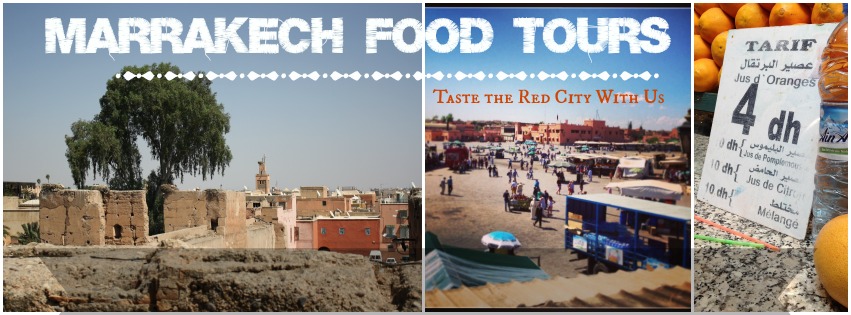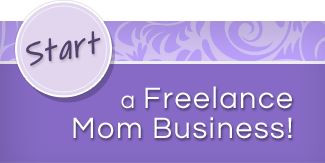
On the surface, Marrakech Food Tours makes perfect sense.
American Amanda Mouttaki had a whirlwind romance with her now-husband Youssef in 2004 and he moved to the U.S. with her. In 2007, she started a blog, Maroc Mama, to keep up the culinary traditions of her husband’s homeland and catalog recipes.
In 2013, the couple decided that if they wanted their two sons to speak Arabic fluently, it was time to move back to Morocco. Amanda already had a thriving, portable writing and social media consultant business.
Through her own move to Morocco, the resulting cross-cultural experiences, and on-going travels, her blog’s focus has also widened to be something that might more accurately be called one of cultural understanding or translating cultures.
When you put food and translating culture together, food tours are a natural extension. Arriving in Marrakech, the couple found that no one offered tours of their favorite foods in their favorite city.
While all the dots connected and stars aligned for this business to come to life in the way that many Freelance Moms dream about, this is one of those serendipitous businesses that looks like a straight line in retrospect, but never did along the way.
But the real reason I want to share it with you is the incredible, quick growth that Amanda experienced with her tour company.
And how you can replicate it.
Maroc Mama Sped Her Way to Success Using 3 S’s
When Amanda moved to Marrakech in 2013, she not only moved to a new country, with all of the usual culture shock that entails, but she also brought her non-traditional, location-independent, laptop-focused job, something that is already hard enough to explain to traditional in-laws in the U.S. Morocco was an entirely different story.
But during those growing pains, one day when she was out in the city with her husband, Amanda thought, what would it be like if we started giving food tours?
From initial market research (more on that below) to launch, Amanda and Youssef got their new business online in just around three months.
Within six weeks, they had already earned their first $1,000.
Within 48 hours of their modest launch, including a great example of help-first-ask-later content marketing on the Maroc Mama blog with a very soft sell at the end, they had four reservations—keep in mind that tours are capped at 6 and run $60 per person—and things went up from there.
Very shortly, the sharp influx of business found Amanda overwhelmed with the administrative side of the business, making sure inquiries were responded to, books were up to date, calendar was managed, and so on.
She brought a new mom looking for something part-time to do from home (her step sister happened to be available and check all the right boxes) to take over that side of the business while she and Youssef focused on tours. “I knew I couldn’t do everything myself and this was one cost that was just a part of doing business successfully,” she says.
Now, she’s looking at hiring another person to help give tours, but taking her time to ramp up in this way because it’s so important to have someone with the right background and personality to represent her brand.
Less than one year after launch, Amanda has already brought on administrative help and is looking to expand her tours.
How did she do it?
Three important S’s allowed her to achieve growth at speed while still allowing her to spend time with her family and continue her writing and coaching.
Synergy
While Amanda already ran a blog about Morocco and a social media coaching business, launching a new food tour company was not something that grew out of her other two areas of expertise or was meant to be intertwined. However, sticking to such complementary areas of focus makes her time management and customer intake easier.
When you are starting a new business and don’t have a social media background or experience writing a blog, getting that piece of the puzzle together can be incredibly time-consuming and draining.
In Amanda’s case, she was learning the business of how to source, write, and run tours. Having the marketing groundwork already laid allowed her to ramp up considerably faster, especially as she chose to not view her new business as a separate social media entity, but simply another planet in her orbit:
I think a blog and the wider world of social media are a great way of marketing yourself. Many people find our tour through my blog or through me on social media. It’s what makes them connect and want to learn more about our life here – it makes us human instead of a storefront.
I didn’t start brand new social media accounts for the tours, I use a unique hashtag instead. This way I reach my audience that I’ve grown and are the type of people already interested in what we offer.
When I’m creating blog content I try to think of ways every month or so to weave in our business without being too promotional.
Specialization
Would you believe that before Amanda launched Marrakech Food Tours, there simply weren’t any food tours in such a visited and delicious city as Marrakech?
Amanda didn’t believe it when she found out either. “We couldn’t believe there were no other food tours in Marrakech and so it made sense to try it,” she says.
It may sound lucky, but it is a combination of research and luck. There are so many tour companies operating in Marrakech, without checking what others were doing and looking for gaps and making a specific choice based on that information, Amanda might have ended up duplicating a tour that an entrenched, name-brand tour company already offered.
But beyond the food focus of her tours, Amanda and Youssef bring—and state this very clearly on their sales page—an incredible amount of cross-cultural understanding to their tours.
Both have lived in both the U.S. and Morocco, both understand how to bridge the two cuisines, and both understand the reticence visitors to a new place can sometimes feel about trying new things and the background they need to feel comfortable to do so.
My best piece of advice is to find an underserved niche and go for it.
Swift Start-up
In the start-up world, a product creation concept called “rapid prototyping” has become the way to grow quickly and massively, especially with tech companies.
Facebook, which allows engineers to make changes live to the site so that managerial review doesn’t create a bottleneck, has made this very well known publicly today with their frequent practice of launching major changes and then scaling them in response to feedback.
The idea is to not overly invest in creating new things until you’re sure how your audience feels about them, and the best way to do that is launch early in the creation process.
This is even more crucial for small businesses.
It’s easy to sit on new ideas for a long time or hem and haw over sinking in a large time or money investment when the specter of the income you’re not bringing in just weighs against you, not a staff of hundreds or thousands of employees on the payroll.
Amanda says:
One of the biggest hurdles people face when starting a business is start-up costs. This was our biggest struggle as well.
Instead of fretting over an inability to start a business because of high costs, look for something that won’t cost you much, that you can start on a shoestring.
You likely will have to work twice as hard right out of the gate but it’s completely possible.
What business ideas are you sitting on where you can apply the 3 S’s on and make your first $1000?





